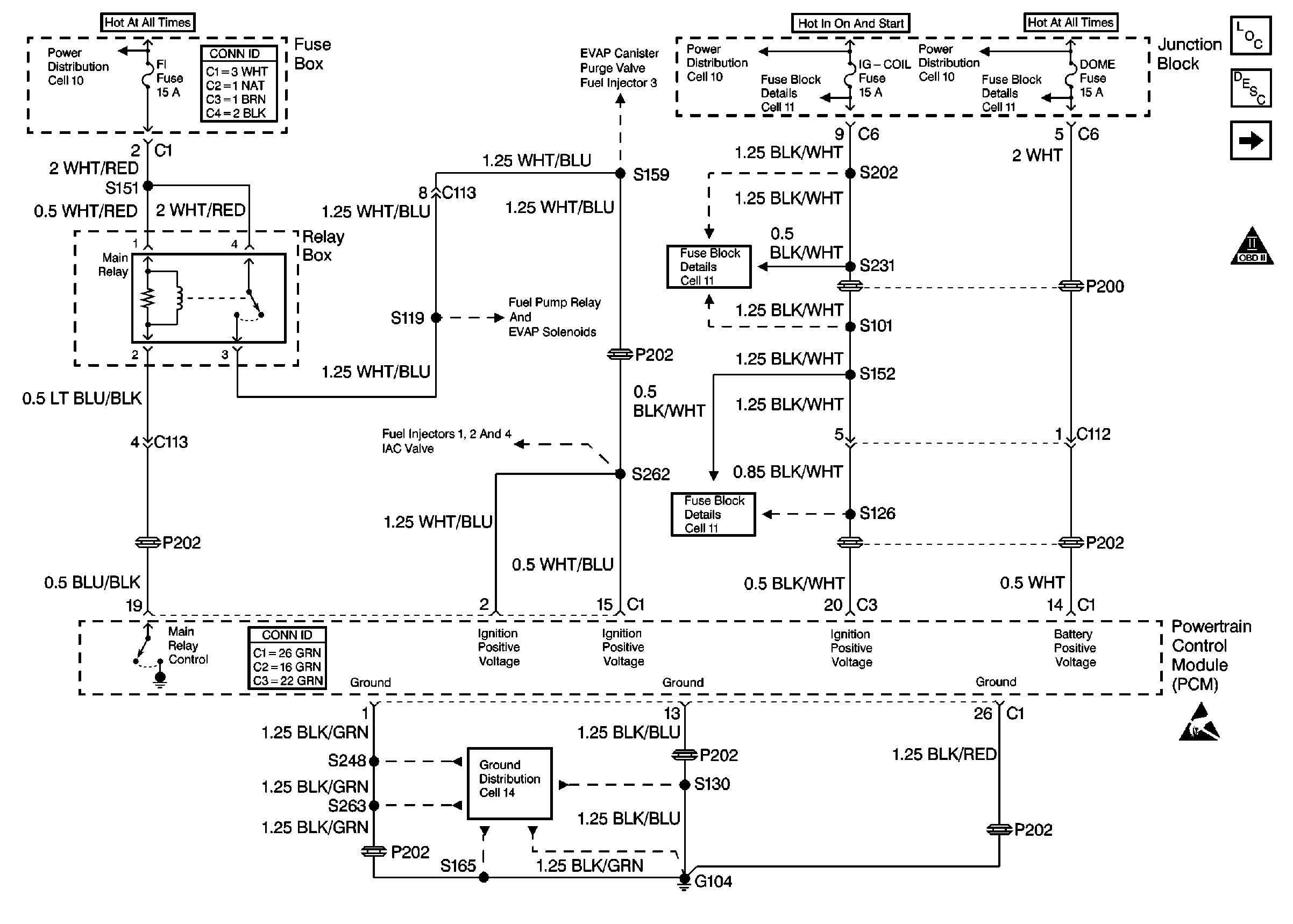Checks
| Action
|
DEFINITION: The engine runs unevenly at idle. The engine
or the vehicle may shake if the condition is severe enough. The engine idle
speed may vary in the RPM. The condition may be severe enough to stall the
engine. The engine idles at an incorrect speed.
|
Preliminary
Check
|
|
Sensor Checks
|
| • | Check the performance of the heated oxygen sensors 1 and 2.Refer
to Diagnostic Aids in DTC P0131 through DTC P0141. |
| • | Check the throttle position (TP) sensor. A sticking throttle shaft
or a binding throttle linkage will cause a high TP sensor voltage. Under these
conditions the PCM may not control the idle. Monitor the TP sensor voltage
with the scan tool or with a voltmeter. The indicated voltage should be less
than 1.25 volts with the throttle closed. |
| • | Check the engine coolant temperature (ECT) sensor. Use a scan
tool in order to compare the engine coolant temperature reading on a cold
engine with the ambient air temperature reading of the same engine. A coolant
temperature reading which is more than 5°C (41°F) above or below
the ambient air temperature reading may indicate a high resistance in the
coolant sensor circuit or in the ECT sensor. Refer to
Temperature Versus Resistance
. |
| • | Check the engine reference signal in the CKP sensor with a scan
tool. Observe the Engine Speed parameter while running the engine at idle.
The scan tool should indicate steady RPM readings and linear RPM readings
while running. If sudden increases or decreases are displayed in the engine
speed, the engine reference signal is not stable enough for the engine to
run correctly. Check for a short to ground in the ignition reference low
circuit of the CKP sensor. A short to ground in the ignition reference low
circuit of the CKP sensor will cause a faulty engine reference signal to
be sent to the PCM. However, this will not set a CKP sensor DTC. |
|
Fuel System Checks
|
| • | Determine if a rich fueling condition or a lean fueling condition
can cause the concern. Drive the vehicle at the speed of the concern. Monitor
the Fuel Trim parameters on a scan tool in order to identify the fuel system
status. |
|
Ignition System Checks
|
| • | Check for adequate secondary ignition voltage with a J 26792
spark tester or with an equivalent. |
| • | Check the spark plugs for any of the following conditions: |
| - | Wet plugs or fuel fouled plugs. |
| - | A bent or loose terminal screw. |
| - | A ceramic insulator that has cracks, carbon tracking, or deposits |
| - | A tip insulator which has cracks, which has carbon tracking, which
has deposits, or is loose. |
| - | A center electrode that is loose |
| - | An incorrect spark plug gap that is too large or too small. |
| • | Check the spark plug cables by connecting an ohmmeter to the ends
of each cable. Replace any spark plug cable that has a reading over 30,000
ohms. |
|
Engine Mechanical Check
| Check for any of the following engine mechanical
concerns:
| • | An incorrect valve lash |
| • | Broken valve springs or weak valve springs |
| • | Sticking valves or leaking valves |
| • | An incorrect camshaft or a worn camshaft |
Refer to
Engine Compression Test
in Engine Mechanical.
|
Additional Checks
|
| • | Check for vacuum leaks. Vacuum leaks can cause higher than normal
idle speed. |
| • | Check that the battery cables and the ground straps are clean
and secure. |
| • | An idle concern that occurs when you turn ON the A/C may indicate
a fault in the A/C idle-up system. Idle speed should increase when you turn
ON the A/C. Check the scan tool in order to determine if the PCM is
receiving an A/C signal. Refer to
Air Conditioning (A/C) Idle Circuit Diagnosis
. |
| • | A/C refrigerant pressure that is too high, or a faulty high pressure
switch, may cause a rough running condition or a stalling condition when you
turn ON the A/C. |
| • | Check the idle air control (IAC) system for correct operation.
Using a scan tool, command the IAC valve to increase or to decrease the engine
idle speed. |
|

